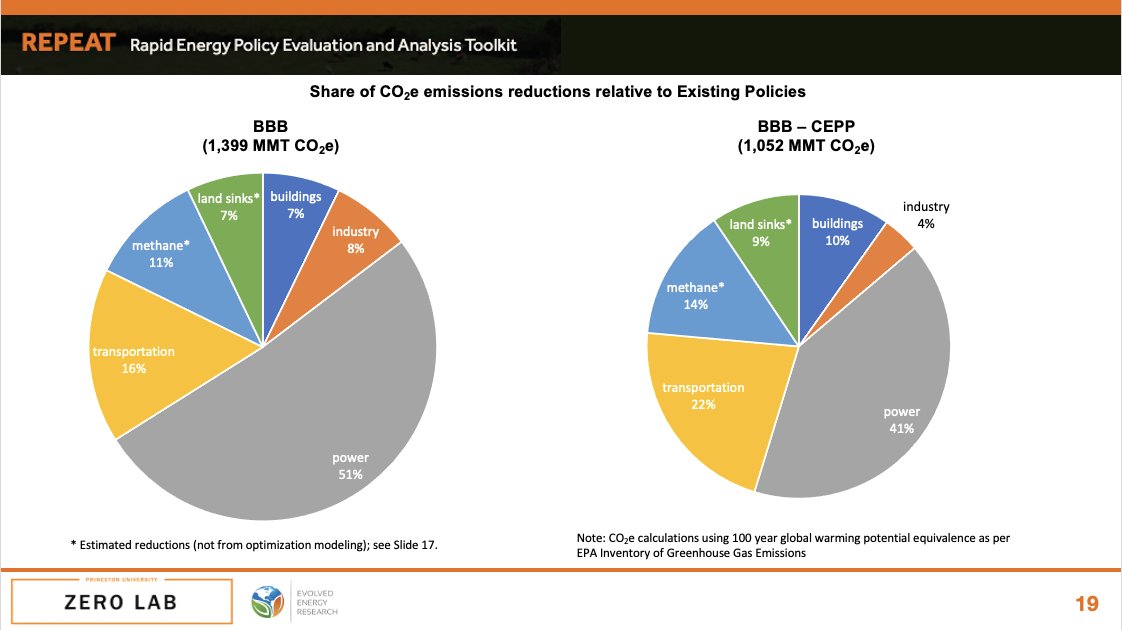
Correct. Plus losing methane fee would mean losing ~130 million tons of CO2-equivalent emissions (100 year global-warming potential as EPA inventory uses; a lot more if using 20 year potential). That's ~10% of the total House package's emissions cuts via repeatproject.org 
https://twitter.com/yayitsrob/status/1452729809122041866

EPA is restoring/expanding regulations on upstream oil and gas methane emissions and can make back up some (or all?) of these tons. eenews.net/articles/metha…
So perhaps the Biden Administration sees these as overlapping policies and therefore less critical to get over finish line?
So perhaps the Biden Administration sees these as overlapping policies and therefore less critical to get over finish line?
Criticall, our REPEAT Project did NOT assume EPA regulations on methane were in place (as rules are still pending) when estimating impact of methane fee.
These kinds of losses show why a 'belt-and-suspenders' approach to climate policy is pretty key: e.g. reportedly losing methane fee but retaining strong EPA regulations, losing Clean Electricity Performance Program but (hopefully) retaining strong clean electricity tax credits.
• • •
Missing some Tweet in this thread? You can try to
force a refresh










